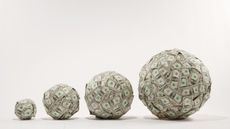The Case For (and Against) Big Pharma
Some of the major drug makers' shares look appealing -- but others you might not want to touch with four-foot forceps.

Big pharma needs a miracle drug. The major drug makers are so beaten down that in some instances dividend yields, rather than the next blockbuster drug in the pipeline, are what are propping up the stocks.
Take Pfizer (symbol PFE). At its May 7 close of $19.92, the stock is off 28% since last June and is 60% below its all-time high, set in 1999. Talk about a lost decade.
The good news, such as it is, is that even as the stock stagnated, Pfizer boosted dividends year in and year out. Result: The shares now yield 6.4%. That's the kind of yield normally associated with a real estate investment trust or a master limited partnership. If not for Pfizer's juicy payout, the stock would almost certainly be lower.

Sign up for Kiplinger’s Free E-Newsletters
Profit and prosper with the best of expert advice on investing, taxes, retirement, personal finance and more - straight to your e-mail.
Profit and prosper with the best of expert advice - straight to your e-mail.
What bugs Pfizer and the likes of Merck (MRK) and Bristol-Myers Squibb (BMY) is a set of ills for which no quick fix exists. One analyst, Credit Suisse's Catherine Arnold, says that patent expirations and a regulatory crackdown are creating a "revolutionary change" in the industry. On the other hand, with drug stocks at historic lows, dividends sweet and an aging population that needs more and better pills, it's fair to ask whether you should be buying drug stocks, despite the litany of woes.
Some experts say yes. But before we let them argue their contrarian case, let's examine the problems in more detail.
Patent cliff. While the companies can finesse some of their problems, they can do little about the biggest one. From 2010 to 2013, sales will take an unprecedented hit as patents on two dozen of the industry's most profitable drugs expire. Falling off this "patent cliff" will be drugs that now account for about 40% of Pfizer's annual sales, expected to exceed $48 billion in 2008. They include the cholesterol-lowering drug Lipitor and the erectile-dysfunction drug Viagara.
Pfizer is hardly alone in its misery. Bristol-Myers Squibb will lose protection on Plavix, a drug used to prevent heart attacks and strokes; GlaxoSmithKline (GSK) will lose asthma treatment Advair; and Eli Lilly (LLY) will relinquish protection on its drug to treat schizophrenia, Zyprexia.
Tough competition. Blockbluster drugs losing patents has always been bad news for drug companies, but today the situation is worse. Manufacturers of generics both here and abroad have become much more aggressive in fighting patents and getting knock-off drugs to market. One study predicts that the generics industry, which already does annual sales of $60 billion, will be able to take aim at an additional $100 billion worth of worldwide drug sales.
High development costs. So, why not just develop new drugs? Easier said than done. To start, that's costly. A widely accepted estimate is that it costs $800 million to develop a new drug, and that figure is rising rapidly. Over the past decade, only about 25 new drugs have come to market each year. However, while the number of drugs-to-market has stayed the same, research and development expenses have doubled.
Tough regulation. And as the costs rise, the Food and Drug Administration has become far more picky about what it will approve. For example, the FDA recently put a roadblock in front of Merck's proposed anti-cholesterol drug, Cordaptive. That didn't help Merck's share price, which, at $39.01, is down by more than one-third since mid January. The FDA has cracked down on all drug approvals since another Merck drug, Vioxx, was suspected of having caused heart attacks in some patients.
Politics. Finally, election-year promises from both sides threaten industry profits. Plans of both Hillary Clinton and Barak Obama include allowing Medicare to negotiate drug prices -- that effectively means regulation of drug prices. And Clinton, Obama and John McCain say they're for permitting re-importation to the U.S. of drugs that carry lower price tags in foreign countries.
All of this adds up to one bleak scenario. And yet, some smart analysts see the sector through Prozac-colored glasses.
Robert Kleinschmidt, manager of the Tocqueville fund, which has outpaced the market every year between 2000 and 2007, says the negatives have pushed the whole sector into such a funk that investors can't see the positives. "The companies have strong cash flows and could have stronger cash flows if they could reduce their largely unproductive research and development expenses," he says.
And you can't underestimate demographics, Kleinschmidt says. While there will be pressure on drug prices, the manufacturers will make it up on volume -- in other words, they'll benefit from the growing number of seniors popping more pills. Moreover, although the populations of developing countries are generally young, their inhabitants will consume more medicines as their nations grow wealthier, says Kleinschmidt.
Big pharma also has something smaller, more innovative drug makers want: Marketing might. George Putnam III, editor of the Turnaround Letter, which has an excellent long-term record, sees a growing number of joint ventures, which will lead to stronger revenues.
And like Kleinschmidt, he thinks drug development problems have been overblown. Says Putnam: "It always seems like they have nothing in the pipeline, and they're doomed. Then they always come up with something."
So confident are Putnam and Keinschmidt in their contrarian view that they both endorse Pfizer, the poster child for Big Pharma's woes. The stock sells at barely more than eight times the $2.36 per share that analysts on average expect the company to earn in 2008.
Essentially, Kleinschmidt and Putnam think that the news on Pfizer is so gloomy that things can only get better. Keinschmidt believes the company will partner with smaller companies to get some new drugs in its pipeline: "You buy it today at $20ish and five years later it's $30ish, and you get a 6% dividend along the way."
Other analysts with a more bearish view of big pharma wouldn't touch Pfizer with four-foot forceps. Zacks analyst Jason Napodano says other beaten-down drug companies have stronger pipelines, better diversification and executives who have been more willing to make tough decisions in recent years. During that time, he says, Pfizer has been "holding hands and singing kumbaya."
One of the few companies Napodano likes in the sector is Johnson & Johnson (JNJ). Only one-fourth of J&J's sales come from pharmaceuticals, with the rest in consumer health care products and medical devices.
But J&J's drug portfolio is broad and isn't flirting with the edge of a patent cliff. Remicade is an anti-arthritis drug that is also being prescribed for everything from psoriasis to Crohn's disease. Remicade sales jumped 37%, to $1 billion, in the first quarter of 2008 from the year-earlier period.
J&J is well managed and has a wonderful track record, says Putnam. "It hasn't stumbled the way some of the other have." At $66.91, the stock sells at 15 times estimated 2008 earnings of $4.45 per share and yields 2.7%.
If J&J is the safe choice to play Big Pharma, Schering-Plough is the one that offers bigger potential rewards, albeit with greater risk. In March, shares of Schering (SGP), along with those of partner Merck, took hits when a study showed that Vytorin, a joint-venture medicine to keep arteries clear from plaque, was no more effective than a generic. Schering, which had traded at $33 last October, dropped to less than $14, but has since recovered to $18.18.
Vytorin is the bad news. The good news is that generics won't be eating Schering's lunch anytime soon. Of all the major drug companies, Schering is least vulnerable to competition from generics manufacturers, says Caris & Company analyst David Moskowitz. He adds that, FDA willing, Schering will win approval for two products this year and has 11 chemicals in advanced trials.
The company has also promised a restructuring plan that will slash $1.5 billion in costs by 2012. And a quick look at the top line of the company's income statement show healthy momentum. Its sales have grown about $1 billion over the past three years. In 2007, Schering bought Organon BioSciences, a Dutch biotech firm, for $14.4 billion, which is one reason for its fat pipeline. Analysts predict that Schering will earn $1.53 a share this year and $1.71 in 2009.
That comes to a dirt cheap 12 times 2008 earnings. If the cloud ever rises from the pharmaceutical industry, expect Schering's stock price to rise the quickest. But even if the industry stays on the ropes, Schering's stellar profit growth will be all the tonic its stock needs.

-
 Pros and Cons of Waiting Until 70 to Claim Social Security
Pros and Cons of Waiting Until 70 to Claim Social SecurityWaiting until 70 to file for Social Security benefits comes with a higher check, but there could be financial consequences to consider for you and your family.
By Patrick M. Simasko, J.D. Published
-
 Now Could Be Time for Private Investors to Make Their Mark
Now Could Be Time for Private Investors to Make Their MarkThe venture capital crunch may be easing, but it isn't over yet. That means there could be direct investment opportunities for private deal investors.
By Thomas Ruggie, ChFC®, CFP® Published
-
 Stock Market Today: Nasdaq Spirals as Netflix Nosedives
Stock Market Today: Nasdaq Spirals as Netflix NosedivesA big earnings boom for credit card giant American Express helped the Dow notch another win.
By Karee Venema Published
-
 Stock Market Today: S&P 500, Nasdaq Extend Losing Streaks
Stock Market Today: S&P 500, Nasdaq Extend Losing StreaksThe two indexes have closed lower for five straight sessions.
By Karee Venema Published
-
 Stock Market Today: Dow Slips After Travelers' Earnings Miss
Stock Market Today: Dow Slips After Travelers' Earnings MissThe property and casualty insurer posted a bottom-line miss as catastrophe losses spiked.
By Karee Venema Published
-
 Stock Market Today: Stocks Stabilize After Powell's Rate-Cut Warning
Stock Market Today: Stocks Stabilize After Powell's Rate-Cut WarningThe main indexes temporarily tumbled after Fed Chair Powell said interest rates could stay higher for longer.
By Karee Venema Published
-
 Stock Market Today: Stocks Reverse Lower as Treasury Yields Spike
Stock Market Today: Stocks Reverse Lower as Treasury Yields SpikeA good-news-is-bad-news retail sales report lowered rate-cut expectations and caused government bond yields to surge.
By Karee Venema Last updated
-
 Stock Market Today: Nasdaq Leads as Magnificent 7 Stocks Rise
Stock Market Today: Nasdaq Leads as Magnificent 7 Stocks RiseStrength in several mega-cap tech and communication services stocks kept the main indexes higher Thursday.
By Karee Venema Published
-
 Stock Market Today: Stocks Tumble After a Hot Inflation Print
Stock Market Today: Stocks Tumble After a Hot Inflation PrintEquities retreated after inflation data called the Fed's rate-cut plans into question.
By Dan Burrows Published
-
 Stock Market Today: Stocks End Mixed Ahead of Key Inflation Reading
Stock Market Today: Stocks End Mixed Ahead of Key Inflation ReadingEquities struggled before tomorrow's big Consumer Price Index report.
By Dan Burrows Published